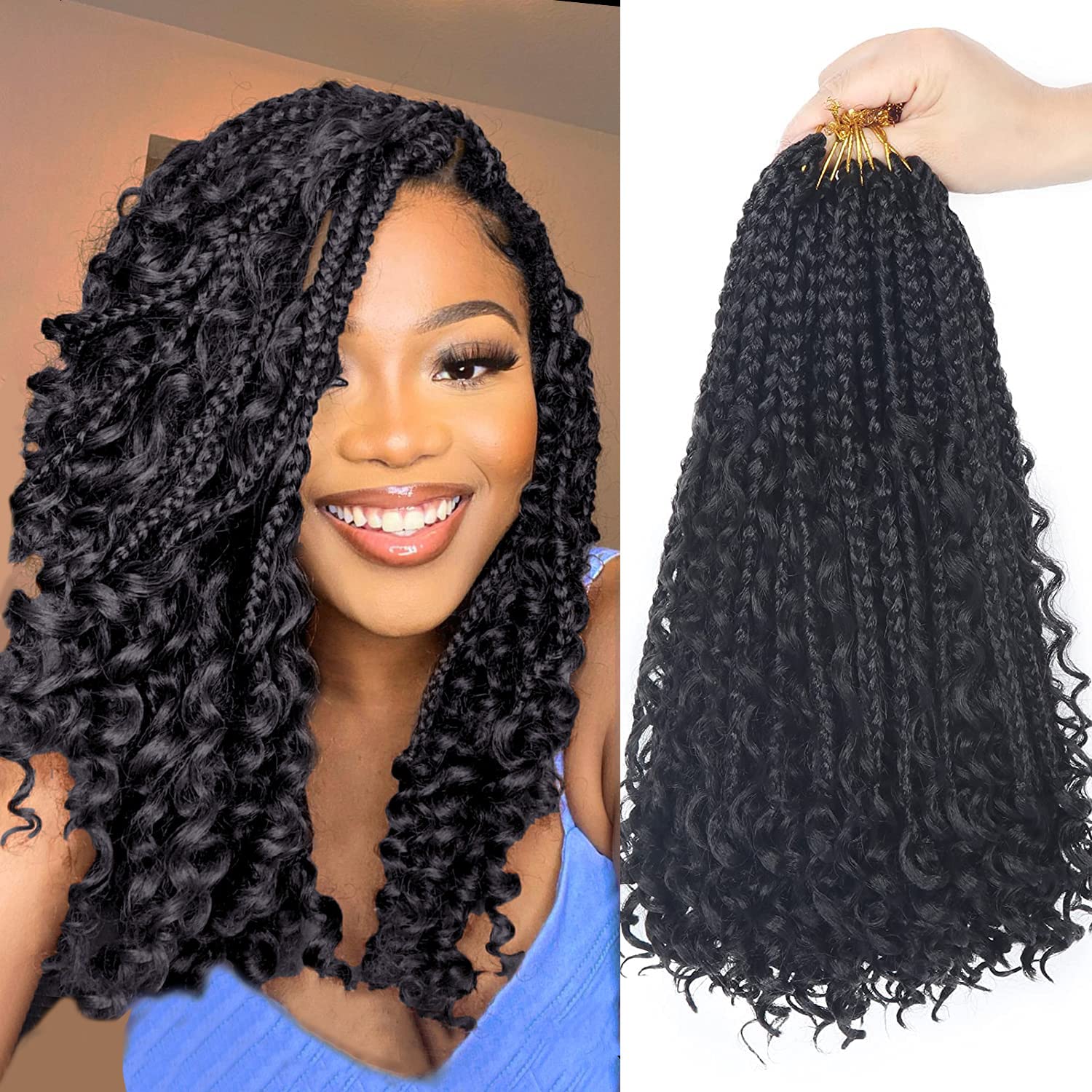Synthetic Hair Braids And Black Women's Health: A Concerning Trend

Table of Contents
The Allure of Synthetic Hair Braids
Braids hold immense cultural significance in many Black communities, representing heritage, identity, and artistic expression. They've been a cornerstone of Black beauty for generations, passed down through families and representing a rich tapestry of tradition. Beyond their cultural importance, synthetic hair braids offer several practical advantages. Compared to intricate natural hair styling, synthetic options provide:
- Wide range of styles and colors available: From classic cornrows to modern jumbo braids, the options are virtually limitless. This versatility allows for self-expression and keeps up with ever-evolving hair trends.
- Protective styling for natural hair growth: When installed correctly, synthetic braids can protect natural hair from environmental damage, manipulation, and breakage, promoting healthy growth.
- Cost-effectiveness compared to salon treatments: Synthetic hair braids are often a more affordable alternative to frequent salon visits and expensive chemical treatments.
Potential Health Risks Associated with Synthetic Hair Braids
While offering numerous benefits, synthetic hair braids also carry potential health risks if not managed correctly. Understanding these risks is crucial for maintaining healthy hair and scalp.
Traction Alopecia
Traction alopecia is a form of hair loss caused by prolonged pulling or tension on the hair follicles. Tightly braided synthetic hair can significantly increase the risk of this condition. Over time, constant tension weakens the hair follicles, leading to hair thinning and, in severe cases, permanent hair loss.
- Symptoms of traction alopecia: Hair thinning, receding hairline, scalp tenderness, and inflammation.
- Prevention strategies: Opt for looser braids, take regular breaks from wearing braids, and use gentle styling techniques.
- Treatment options: Range from medication to hair restoration surgery, depending on the severity. Early intervention is key.
Scalp Infections
The environment under tightly braided synthetic hair can be conducive to bacterial and fungal growth. Trapped moisture, sweat, and lack of proper hygiene create a breeding ground for infections.
- Common types of scalp infections: Folliculitis (inflammation of hair follicles), tinea capitis (ringworm), and seborrheic dermatitis (dandruff).
- Importance of scalp hygiene: Regularly cleanse the scalp with a gentle, sulfate-free shampoo, ensuring thorough rinsing.
- Signs and symptoms of scalp infections: Itching, redness, inflammation, scaling, and pus-filled bumps.
Hair Breakage and Damage
Tight braiding, the weight of extensions, and the use of harsh chemicals in synthetic hair can all contribute to hair breakage and damage. This can lead to split ends, weakened hair shafts, and even follicle damage.
- Identifying signs of hair damage: Increased breakage, split ends, dryness, dullness, and loss of elasticity.
- Techniques for minimizing breakage: Use gentle detangling brushes, avoid excessive heat styling, and condition your hair regularly.
- Importance of hair care products: Choose high-quality, moisturizing products specifically formulated for Black hair and sensitive scalps.
Chemical Exposure
Some synthetic hair products may contain harmful chemicals, such as formaldehyde, which can trigger allergic reactions or other health problems.
- Potential harmful chemicals found in some synthetic hair: Formaldehyde, dyes, and other additives.
- Importance of choosing reputable brands: Research brands known for using high-quality, less harmful materials. Look for certifications and reviews.
- Symptoms of allergic reactions: Itching, rash, redness, swelling, and breathing difficulties.
Minimizing Risks and Promoting Healthy Hair Practices
By taking proactive steps, Black women can minimize the potential health risks associated with synthetic hair braids and maintain healthy hair.
Choosing the Right Braider
Select a braider with experience and a reputation for gentle braiding techniques. Look for positive reviews and inquire about their hygiene practices.
Proper Hair Care
Maintain good scalp hygiene by regularly washing and conditioning your hair. Use gentle, sulfate-free products and avoid harsh chemicals. Keep your braids clean and free of debris. Ensure proper detangling and moisturizing.
Taking Breaks
Give your hair and scalp a break from braids regularly. Allow your natural hair to breathe and recover. Experiment with different protective styles that allow for airflow.
Seeking Professional Help
If you experience any concerning symptoms, such as excessive hair loss, scalp infections, or allergic reactions, consult a dermatologist or trichologist immediately.
Conclusion
Synthetic hair braids offer a powerful tool for self-expression and beauty among Black women. However, it's essential to prioritize hair health while enjoying these versatile styles. By understanding the potential health risks associated with synthetic hair braids, and by following the recommended tips for minimizing these risks, you can enjoy the best of both worlds—beautiful, stylish hair and a healthy, thriving scalp. Make informed choices about your synthetic hair braids; prioritize scalp health when choosing synthetic hair braids; and learn more about responsible synthetic hair braid practices. Remember, balancing beauty and health is key to long-term hair care.

Featured Posts
-
 Asec Mimosas Eliminee De La Coupe De La Caf Retour Sur La Defaite
May 27, 2025
Asec Mimosas Eliminee De La Coupe De La Caf Retour Sur La Defaite
May 27, 2025 -
 Germaniya I 10 Stran Koalitsiya Reb Dlya Podderzhki Ukrainy
May 27, 2025
Germaniya I 10 Stran Koalitsiya Reb Dlya Podderzhki Ukrainy
May 27, 2025 -
 Discussion Surrounding Renee Rapps Topless Video
May 27, 2025
Discussion Surrounding Renee Rapps Topless Video
May 27, 2025 -
 Chomu Tramp Nenavidit Teylor Svift Istoriya Yikhnoyi Vorozhnechi
May 27, 2025
Chomu Tramp Nenavidit Teylor Svift Istoriya Yikhnoyi Vorozhnechi
May 27, 2025 -
 Zamfara Bandit Kingpin Eliminated In Police Operation
May 27, 2025
Zamfara Bandit Kingpin Eliminated In Police Operation
May 27, 2025
Latest Posts
-
 L Integrale De L Emission Europe 1 Soir 19 03 2025
May 30, 2025
L Integrale De L Emission Europe 1 Soir 19 03 2025
May 30, 2025 -
 Marine Le Pen Et La Presidentielle 2027 Un Possible Empechement Selon Jacobelli
May 30, 2025
Marine Le Pen Et La Presidentielle 2027 Un Possible Empechement Selon Jacobelli
May 30, 2025 -
 Reecouter L Integrale D Europe 1 Soir Du 19 Mars 2025
May 30, 2025
Reecouter L Integrale D Europe 1 Soir Du 19 Mars 2025
May 30, 2025 -
 Exclusion De Marine Le Pen En 2027 Jacobelli Repond A Hanouna
May 30, 2025
Exclusion De Marine Le Pen En 2027 Jacobelli Repond A Hanouna
May 30, 2025 -
 Europe 1 Soir Du 19 03 2025 L Integrale De L Emission
May 30, 2025
Europe 1 Soir Du 19 03 2025 L Integrale De L Emission
May 30, 2025
